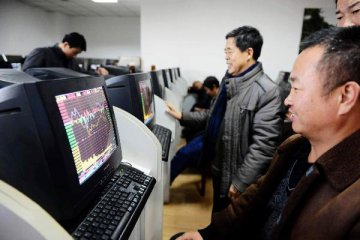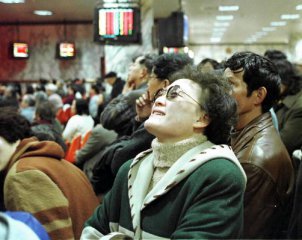
Last week, both Shanghai and Shenzhen stock exchanges witnessed pullback. SSE Composite Index and ChiNext Index ended 2.56 percent and 0.78 percent lower respectively, with the former dropping to the bottom half of the range from 3400 points to 3600 points, and the latter trading sideways around 2700 points. It is estimated that the market will experience further eclipse in light of the approach of Federal Reserve rate hike, continuous fluctuation of exchange rate and pressure from new shares subscription.
Federal Reserve rate hike moves closer
Turbulence hit currency market
Since Federal Reserve’s regular meeting in October, the rate hike probability within the 2015 rises. Janet Yellen indicated earlier that U.S. economic data since October has met the expectations of progress made in labor market, which has seen full employment goal set by the Federal Reserve, and factors causing inflation are expected to fade in 2016. After the release of nonfarm payroll employment report released on Dec. 4, the anticipation on Federal Reserve’s rate hike in December increased. 90 percent of investors and analysts believe that the Federal Reserve will announce rate increase after the Federal Open Market Committee (FOMC) meeting from Dec. 15 to 16, and terminate zero interest rate since December 2008. We believe that it is the way of the Federal Reserve to release signals for a long time before the announcement of any important decision, minimizing the impacts by giving enough time for the market to digest.
In Eurozone, data released on Dec. 8 by Eurostat shows that Eurozone’s GDP increased a seasonally-adjusted 0.3 percent in Q3 compared with the previous quarter, which was the same with anticipation and initial value. Besides, government spending of this region made greater contribution to GDP growth in Q3, but the percentage of export declined during the same period, as import growth rate outperformed that of export. Data indicates that Eurozone’s economic growth in the third quarter was primarily driven by private consumption and government expenditure, while export was dragged down by the slowdown of global trade. European Central Bank decided to lower deposit interest rate to -0.3 percent on Dec. 3. This greatly disappointed the market as it was much lower than what was expected. But to some extent, it indicated that situation in Eurozone was not as bad as what the market imagined. On the same day, the exchange rate of Euro against U.S. dollar increased 3 percent, the largest growth since March 2009.
However, the currency market is never tranquil. On Dec. 9, the exchange rates of U.S. dollar against Euro, Japanese yen, pound all declined more than 800 basis points, causing global market to have closed lower. Last Friday (Dec.11), U.S. stock market also stumbled. Three major stock indexes dropped nearly 2 percent, the largest intraday decrease since September. Dow fell by 3.3 percent and crude oil price dropped by 11 percent within a week, which hit a seven-year low.
While RMB has maintained transient serenity after included in IMF currency basket, onshore RMB exchange rate suffered vertical sink in the latest six trading days with 100 basis points lower each day. Since Dec.4, onshore RMB has depreciated almost 700 basis points, and the central parity of RMB against U.S. dollar falls at 6.4552 yuan. State Administration of Foreign Exchange (SEFA) explained on last Thursday that pressure on the outflow of cross-border capital has reduced significantly since October when compared with the third quarter, which was attributed by the effects of policy and market and seasonal factors. Currently, the fundamentals of the market are all healthy, and RMB is not likely to see substantial depreciation for long.
Economic data lower than expected
More stabilizing policies are called for
People’s Bank of China announced that the foreign exchange reserve decreased by 87.3 billion U.S. dollars to 3.44 trillion dollars, which was out of expectation and hit the new low in 33 months. In November, China’s total import and export value recorded an aggregate of 22.08 trillion yuan, declining 7.8 percentage points year on year. The export value was 12.71 trillion yuan, 2.2 percent lower year on year; import value posted 9.37 trillion yuan, 14.4 percent lower year on year; trade surplus recorded 3.34 trillion yuan, 63 percent higher year on year. In November, CPI increased 1.5 percent year on year and kept flat with October; PPI declined 5.9 percent year on year and fell 0.5 percent when compared with October, dropping further 0.1 percentage points than October. Generally, seasonal factors and higher probability of U.S. rate increase were the major reasons for the significant outflow of foreign reserve in November; while PPI to a large extent was impacted by international commodity market. The fact that import and export data dropped below expectation indicated a weak domestic and foreign demand, thus foreign trade situation was not optimistic. Significant drop of commodity price in November continued to push down PPI.
Based on annual tradition, the Central Economic Working Conference will be held in the middle of this month; besides conclusion on the work of this year, it will set major tasks for next year. 2016 is a start of “13th Five-year Plan” for China, and also a crucial year for China’s economic transformation. It is expected that the keynote of the economic work is still to seek for growth in stabilization. Future policies will focus on stabilizing growth. It is very likely to adopt the integration of active fiscal policies and stable monetary policies for macro adjustment and control to support the structural reform of supply side and demand for stable growth. During the recent month, senior management frequently made statements on economic issues, including supply side reform, inventory reduction of real estate market, consumption upgrading, “Internet Plus” and international capacity cooperation, which can laterally reflect the highlights of economic work for next year. We believe that it will take time for economy to touch the bottom; it is still likely to cut interest rates and reserve requirement ratio in the first half year of 2016; in order to support the economy to touch the bottom as soon as possible, it is likely to issue the policies to strengthen the optimization on inventory of the traditional industries.
Market will experience further eclipse
To focus on changes led by registration-based IPO system
Recently, insurance funds frequently took moves in buying shares of listed companies to the five percent limit through secondary market acquisition, which triggers an expectation of “20 percent rise VS 80 percent decrease” in the market. Since July, eight insurance companies, such as Anbang Insurance Group, Qian Hai Life Insurance Co., Ltd., Guohua Life Insurance Co., Ltd. and Funde Sino Life Co., Ltd., have participated in buying shares of around 30 listed companies to the five percent limit through secondary market acquisition. Sunshine Insurance Group bought shares of three listed companies to the five percent limit through secondary market acquisition just in one day; Qian Hai Life Insurance becomes the largest shareholder of China Vanke Co., Ltd. (000002.SZ); Anbang Insurance keeps an eye on Sino-Ocean Land Holdings Ltd. (03377.HK), Beijing Tongrentang Co., Ltd. (600085.SH), Xinjiang Goldwind Science And Technology Co., Ltd. (002202.SZ) and etc., and usually buys blue-chip stocks to the five percent limit through secondary market acquisition.
We believe that the rise of blue-chip sector led by real estate stocks is the lagged demand for rising under favorable expectations; and the market expects that related policies will be issued to optimize the inventory of traditional industry, but in terms of current market environment, it is difficult to change the situation. In the week before last, the inflow of margin requirement for securities was 309.3 billion yuan, much higher than 46.7 billion yuan of last week. But the market adjustment has initiated since the capital recycling, showing that capital increment has no stronger intention to enter into the market; in terms of small-cap stocks, they are obviously diversified after experiencing rise in October and November, the sector effect is weakening, and hotspot is not strong enough to support its persistence, which shows that capital has entered into a stage of locking the profit at the end of this year.
Based on the announcement on Dec. 9 by the China Securities Regulatory Commission, the State Council has approved the draft a few days before, and will gradually implement the registration-based IPO system within two years. The State Council proposed in the draft this time to adjust related regulations of Securities Law during the reform on registration-based IPO system, which means that implementation of registration-based IPO system will not rely on the revision of Securities Law, and policies will be issued much sooner. In terms of short term, registration-based IPO system will lower the market valuation due to increased stock supplies, and meanwhile distribute the capital in the market. We could review the last round of major reform in the A-share market, reform of non-tradable shares: the market experienced a down-to-up trend (1,169 points-998 points-1,188 points) from initial pilot work of non-tradable shares reform to full implementation, and bullish market started after the second bottom-touching of three months. In terms of long term, registration-based IPO system will guide the investment concept and valuation tendency, cultivate the investors’ shareholding habit, and improve the long-term and normal status of wide-scope fluctuation in the capital market, which will benefit the stabilization of capital market and protect the investors.
In conclusion, indexes will possibly continue to slightly fluctuate in a short term. With daily average turnover of 800 billion and frozen capital of around 3 trillion yuan for new shares in this week, the market will experience further eclipse. But important conferences will be held soon with strong market sentiment to maintain the stabilization; investors can pay attention to lagged demands for rising in blue-chip sectors, such as real estate, finance, electric power, and focus on thematic opportunities of information security, Internet Plus, environmental protection and agriculture.
Translated by Adam Zhang, Jelly Yi






















Latest comments